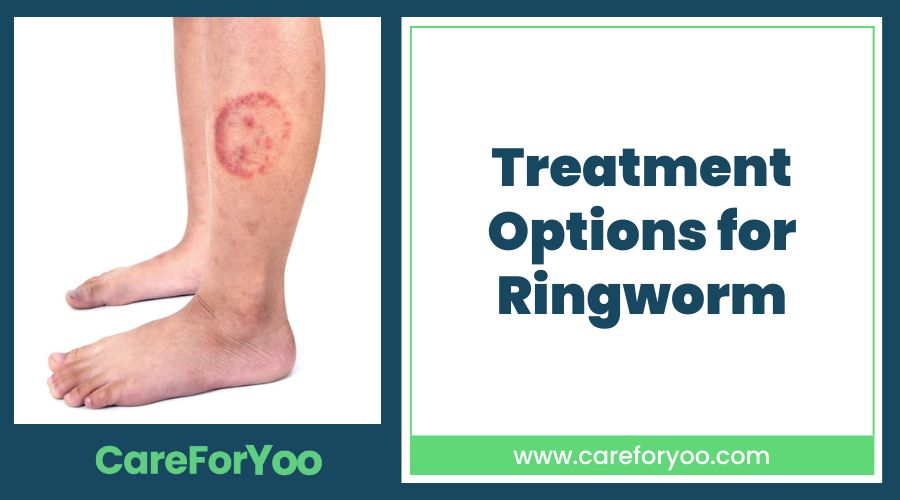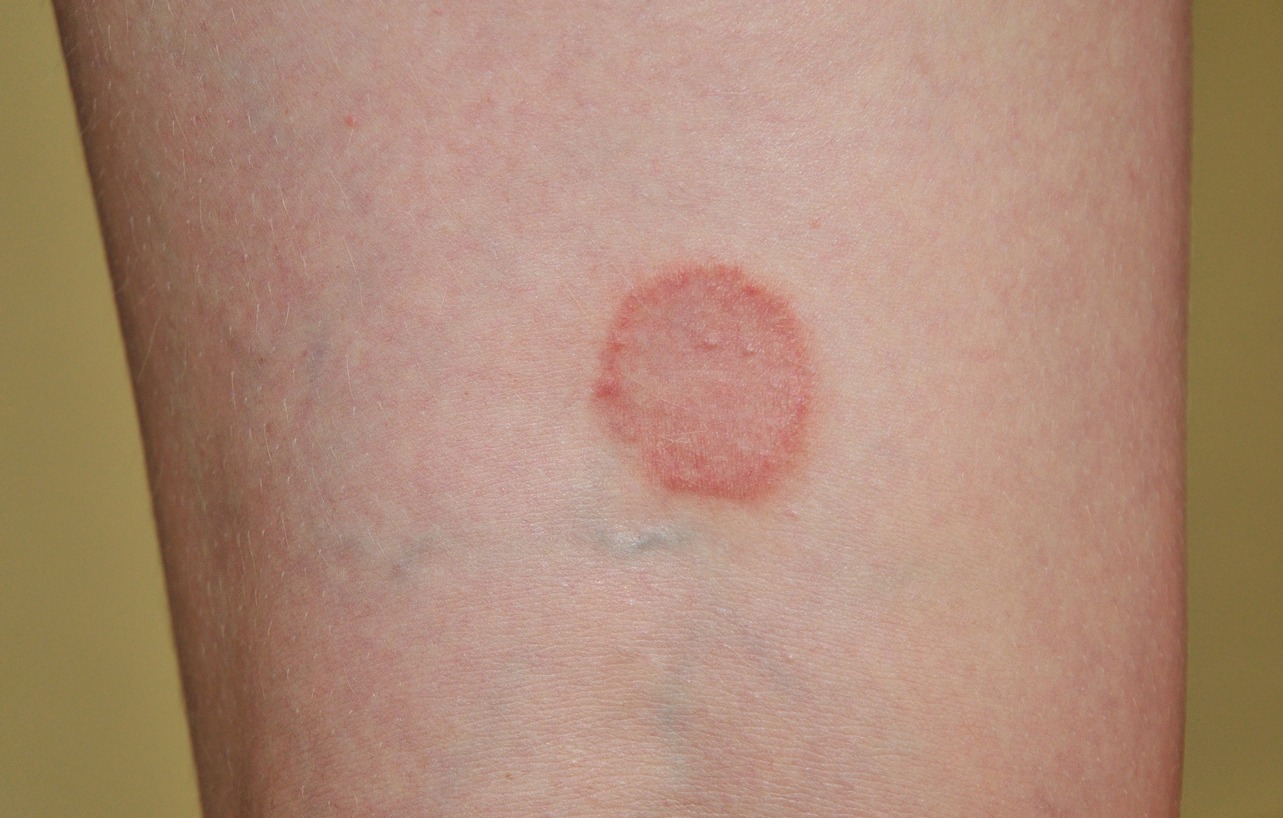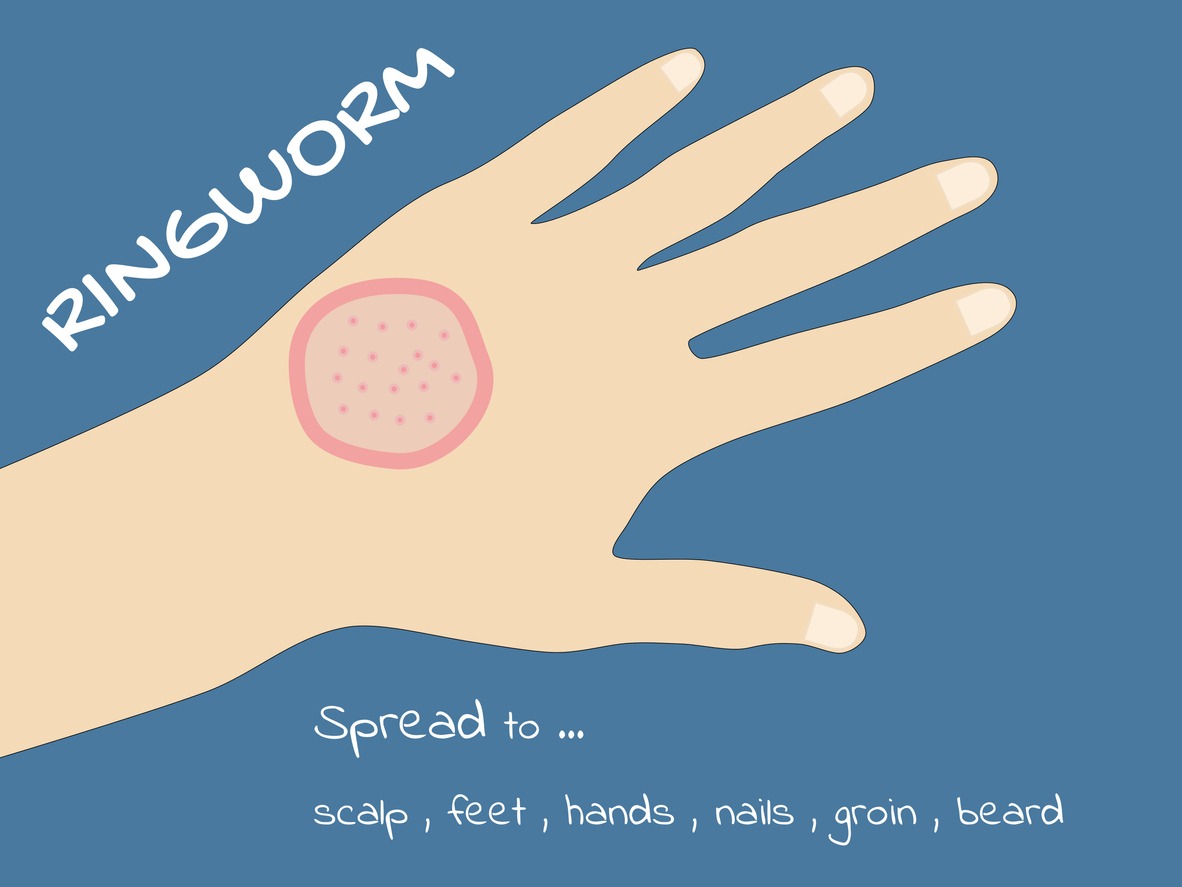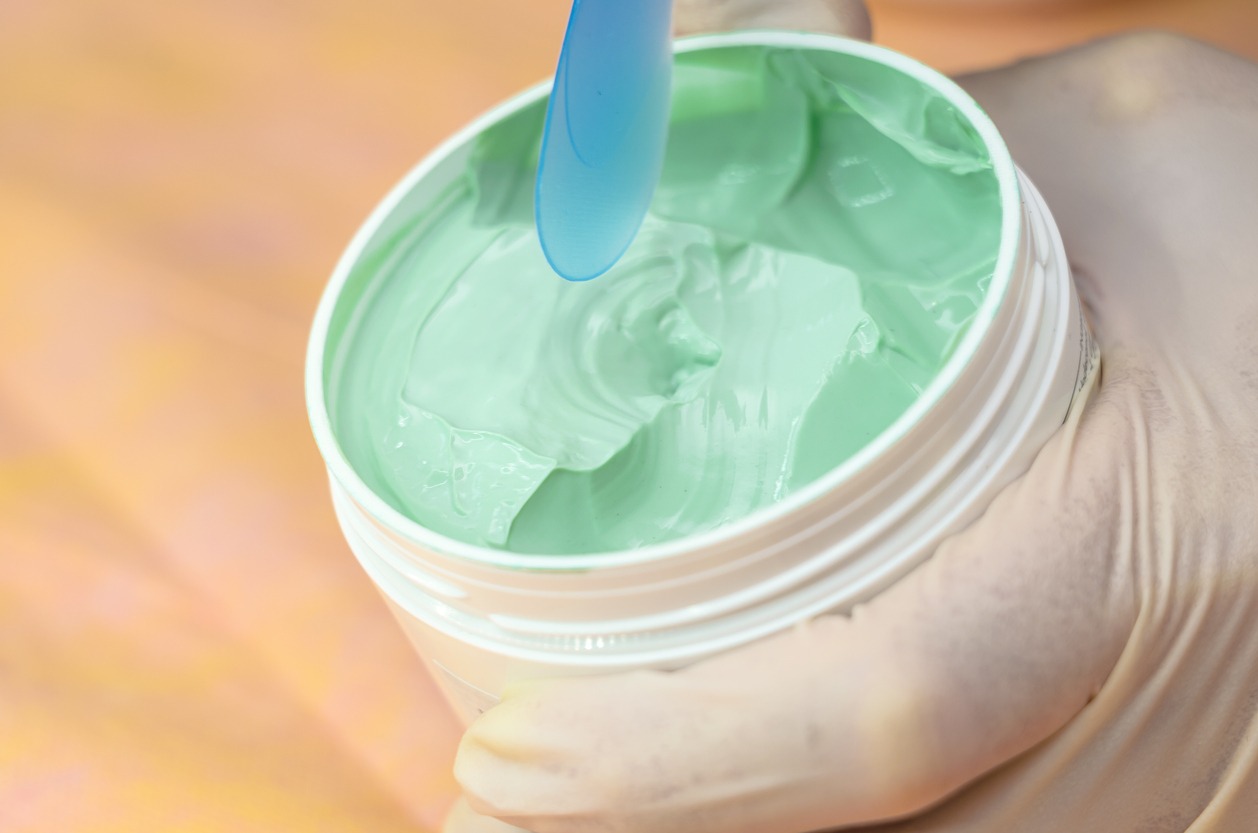Disclaimer: This article is for informational and educational purposes only and does not substitute professional medical advice. It is important to always consult a medical professional for any health issues.
Ringworm is also known as tinea manus or dermatophytosis. It is among the most common fungal infections of the skin and nails. Even though it is called ringworm, it does not have anything to do with worms. The reason it is called that is that it often causes an itchy, red, circular, or ring-shaped rash, as stated by the Centers for Disease Control and Prevention (CDC). This skin condition may also appear anywhere on the body.[1]
This type of fungal infection is highly contagious. This means that it can be transferred easily from one person to another or even from animal to person. However, you don’t need to worry because ringworms are common and can be treated easily. The location and severity of the ringworm infection will determine the type of treatment you require. In most cases, doctors usually recommend medications that you can purchase over the counter (OTC) at local drugstores, while other types of treatments require a prescription.[2]
If you are looking for ways how to treat ringworms, we are here to help you. In this post, we are giving you the different treatment options for ringworm.
Different Types of Ringworm
Ringworm can occur anywhere on the body, and it has different names depending on which part of the body it affects. Below are the different types of ringworm:[1]
- Athlete’s Foot (Tinea pedis): ringworm on the feet
- Jock Itch (Tinea cruris): ringworm on the groin, buttocks, and inner thighs
- Tinea barbae: ringworm on the beard area
- Tinea faciei: ringworm on the face
- Tinea manuum: ringworm on the hands
- Tinea capitis: ringworm on the scalp
- Onychomycosis (Tinea unguium): the fingernails and toenails have ringworm
- Tinea corporis: other body parts with ringworm, such as the arms or legs
Signs and Symptoms of Ringworm
The specific symptoms of ringworm also depend on where it is on the body. But some of the general signs and symptoms of ringworm include itchy skin, a ring-shaped rash, red, scaly, or cracked skin, and hair loss.[1]
Below are the signs and symptoms of ringworm based on the specific part of the body that is affected:
Athlete’s Foot: The skin may peel or become red, itchy, and swollen between the toes. The heels and soles of the feet can also be affected. In severe cases, some might experience blistering of the feet.
Jock Itch: Itchy, scaly red spots often occur on the inner thighs.
Tinea barbae: Itchy, scaly red spots are visible on the chin, upper neck, and cheeks. The spots may become crusty or be filled with pus. There are times when hair loss may occur.
Tinea faciei: Itchy and scaly plaques may appear on the cheeks. Sometimes crusting and pustules are seen.
Tinea manuum: Dry skin with deep cracks may appear on the palms, and ring-shaped patches occur on the back of the hand.
Tinea capitis: A round, itchy, scaly bald area on the scalp that is associated with this illness may enlarge with time. In comparison to adults, children are more likely to have this condition.
Onychomycosis: In this condition, nails become thick and abnormal in color and shape. One or more nails can also be affected. This type of ringworm usually occurs in people who have had athlete’s foot for a long time.
The Different Treatment Options for Ringworm
As we’ve already discussed, the severity and location of the ringworm infection will determine the type of treatment you require. The only way to cure ringworm is through the use of antifungal medication. But there are other things that you can do to relieve the symptoms until the medication begins to work. Below are the different options that you have for treating ringworm.
Treating Ringworm at Home
When treating ringworm at home, you need to do your best to prevent the fungus from spreading to other parts of your body, as well as to other people or pets. It’s because ringworm can be transmitted between humans, dogs, and cats. While you will need antifungal medications in order to treat ringworm, below are the other things that you can do at home to help stop its spread:
- Always keep your hands clean: Each time you touch your rash and before you touch anyone else, make sure that you wash your hands.
- Always wash your clothes, towels, and beddings: When you have ringworm, you need to wash everything that you have worn or touched using hot water and laundry detergent.
- Make sure to shower after workouts: This is very important, especially for those who play contact sports.
- Always wear shower shoes: You can protect your feet at the gym or pool by wearing shower shoes. This will also prevent the infection from spreading.
- Have your pet checked for fungal infection: This is also a good idea as pets like dogs can also spread the infection to the people in your home.
Below are some of the ways how you can manage ringworm at home:[3]
- Apply a cool compress to the uncomfortable area for about 20 to 30 minutes at a time as needed.
- Keep the areas affected by ringworm clean and dry because fungi love warmth and moisture. After washing or bathing, use a separate towel to dry the infected area on your body.
- If possible, avoid wearing clothes and shoes that can cause you to sweat.
- Always change your clothes daily.
- Do not cover ringworm with a bandage or other dressing.
- Disinfect the items that you need to keep.
- To prevent the spread of scalp ringworm, do not wear someone else’s hat or cap. If your child has ringworm, ensure that they do not share sports headgear like helmets with other kids.
Over-The-Counter Ringworm Treatment
For most cases of ringworm, the first treatment option is to use a non-prescription antifungal medicine. These may come in different formulations, such as creams, ointments, powders, or sprays. These medications work fast and are mostly available in drugstores, pharmacies, and even online. Below are some of the antifungal medications that are commonly used to treat ringworm on the skin:[3]
- Clotrimazole
- Miconazole
- Terbinafine
- Ketoconazole
Most of these topical medications can be bought without a prescription. You can use them to treat the affected area of your skin for as long as directed, even if you think the ringworm is already cured. This way, the infection will be prevented from coming back.
However, ringworm on the scalp needs to be treated with oral medication. Most of the time, using a shampoo that contains a fungus-fighting ingredient may also help speed up the healing process. If you are prescribed a prescription medicine to treat ringworm of the scalp, your doctor may also suggest you use an OTC shampoo that contains ketoconazole. One example of this is Nizoral.[3]
Prescription Medications for Ringworm
There are times when severe cases of ringworm require a prescription antifungal medication to be cured. These include ringworm on the skin that does not go away even after using OTC medication, as well as ringworm of the beard and ringworm on the scalp.
If the ringworm on the skin does not go away after using an OTC topical medication for the full amount of time directed, you might need a stronger prescription medication. If the infection gets worse or doesn’t go away, some examples of topical prescription products that may help treat ringworm include ciclopirox, econazole nitrate, and oxiconazole nitrate.[3]
Fungal infections on the scalp need to be treated using prescription antifungal medication. Some examples of these are griseofulvin, itraconazole, and fluconazole. There are times when a doctor will recommend prescription-strength ketoconazole shampoo to treat persistent ringworm on the scalp.[3]
Below are some examples of prescription medications for ringworm:
- Terbinafine: If your doctor recommends these tablets, you need to take them once a day for a month. They work in most ringworm cases, and the side effects are often mild and don’t last long. However, this medication can’t be taken by those who have liver disease or lupus.[2]
- Griseofulvin: This medication is taken orally for 8 to 10 weeks. It is also available as a spray. However, it can’t be taken by pregnant women as it can cause birth defects.[2]
- Itraconazole: This medication is prescribed in pill form and is taken for a week up to 15 days. However, it is not intended for children, the elderly, and those who have severe liver disease. Some of the side effects of this medication might include nausea, vomiting, diarrhea, and headache.[2]
Natural Remedies to Treat Ringworm
Over-the-counter and prescription medications are tried and tested when it comes to treating ringworm. But there is some preliminary research that suggests natural remedies that might work for some people. However, you need to remember that these options have not been tested enough to be recommended by doctors. But if you are interested in trying alternative treatments for ringworm infections, you may also ask your doctor to see if they might also be an option.
Below are some examples of natural remedies that might help treat ringworm:
Tea Tree Oil
Based on some preliminary research, tea tree oil or Melaleuca alternifolia, which is widely used in aromatherapy, may also help cure ringworm that affects the feet. There was a study in 2002 published in the Australian Journal of Dermatology that compared solutions that contain 25% tea tree oil or 50% tea tree oil with a placebo or inactive substance to treat athlete’s foot. The subjects of the study applied one of the three options to the parts affected by a fungal infection twice a day for a month.
When the study ended, around three-quarters of the participants who used the 25% solution had significant improvement in their infection. More than half of those who used the 50% solution improved. However, only 39% of the placebo group saw an improvement in their condition.[3]
Garlic Extract
This is a natural compound that comes from garlic. It has also shown promise in the treatment of ringworm on the skin. Back in 1999, a study found out that a gel containing ajoene helped treat jock itch and ringworm on the skin.
The active ingredient of Lamisil, terbinafine, was found to be less efficient than ajoene or garlic extract in treating athlete’s foot in a short research that was published in the Journal of the American Academy of Dermatology in 2000. For this study, the researchers divided 70 subjects into three groups. In the first group, 0.6% ajoene was present in the topical treatment. In the second, 1% ajoene, and in the third, 1% terbinafine.[3]
Conclusion
Ringworm is a skin infection caused by a fungus, and it can be spread from person to person, from animal to person, and through touching objects that were touched previously by someone with the infection. Therefore, it can be prevented by limiting contact with a person who has the infection. This can be done by avoiding the sharing of personal items like hats and towels.
People who have ringworm can use over-the-counter antifungal medications to treat it. Therefore, if you suspect that you may have ringworm, do not hesitate to consult your doctor in order to get the right treatment that you need for your condition. We hope this post helped you learn more about the treatment options for ringworm.
References
[1] Castro, J. B. (2022, November 11). What is ringworm? symptoms, causes, diagnosis, treatment, and prevention. EverydayHealth.com. Retrieved December 29, 2022, from https://www.everydayhealth.com/ringworm/guide/
[2] Pathak, N. (2020, September 2). Ringworm treatment: How to get rid of ringworm? WebMD. Retrieved December 29, 2022, from https://www.webmd.com/skin-problems-and-treatments/what-is-the-treatment-for-ringworm
[3] Wong, C. (2022, August 27). How ringworm is treated. Verywell Health. Retrieved December 29, 2022, from https://www.verywellhealth.com/treatments-for-ringworm-89946




